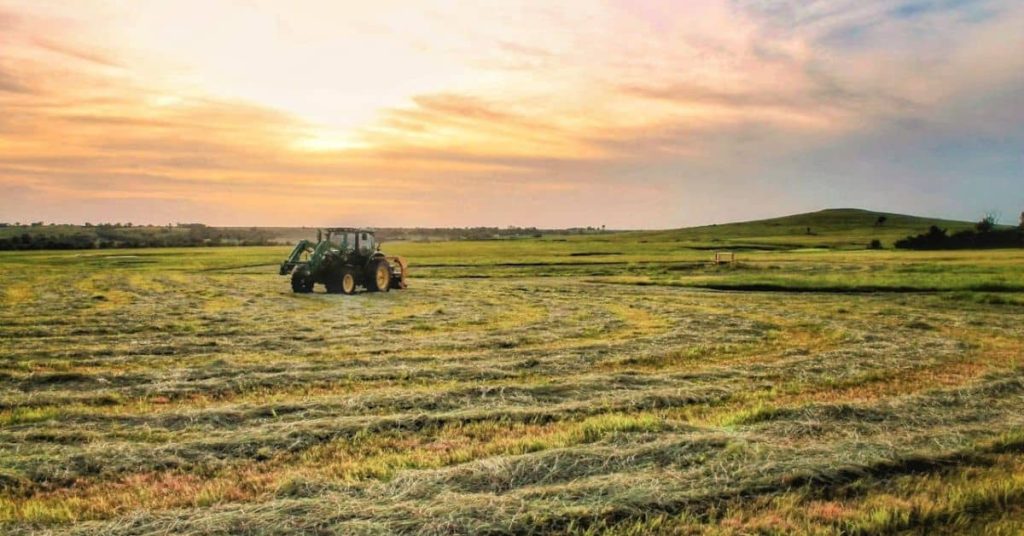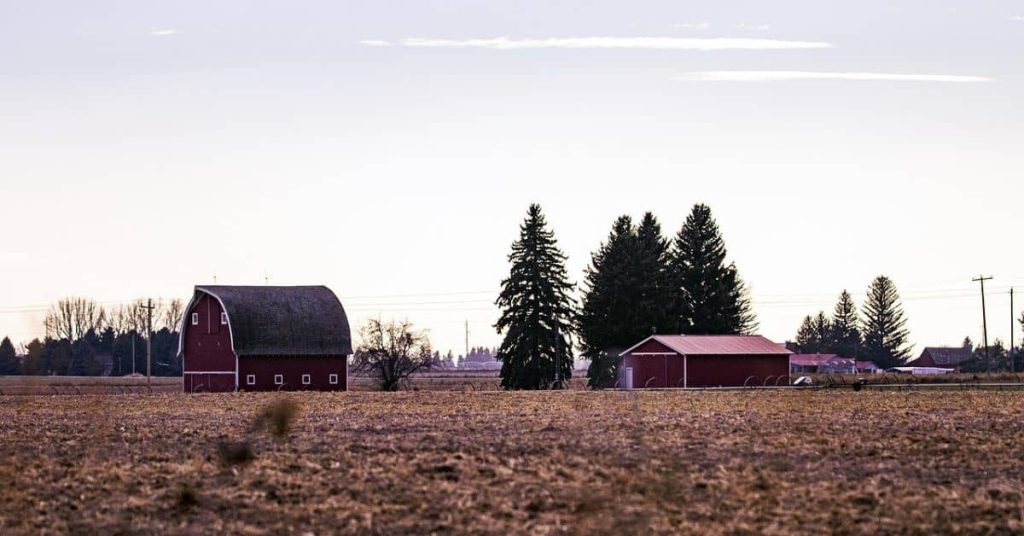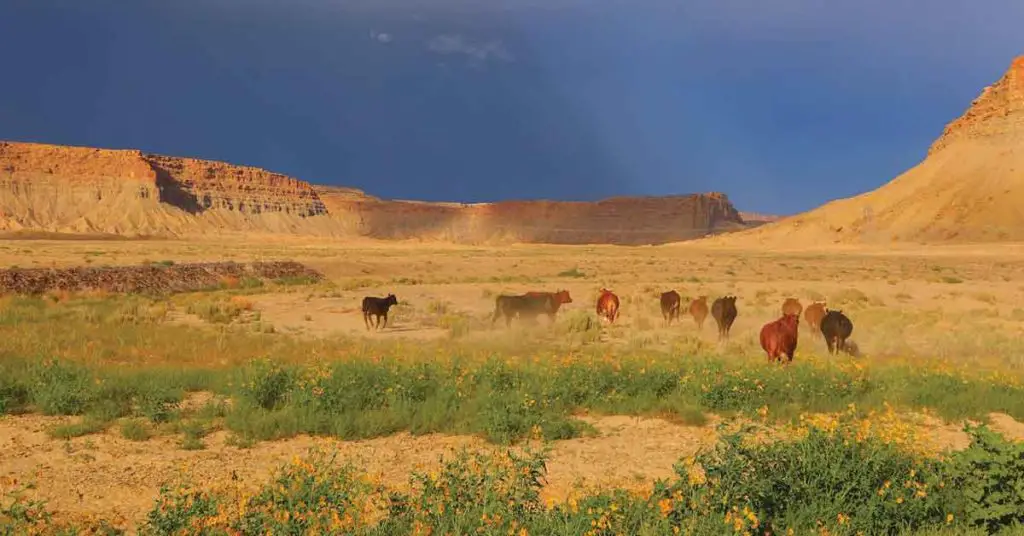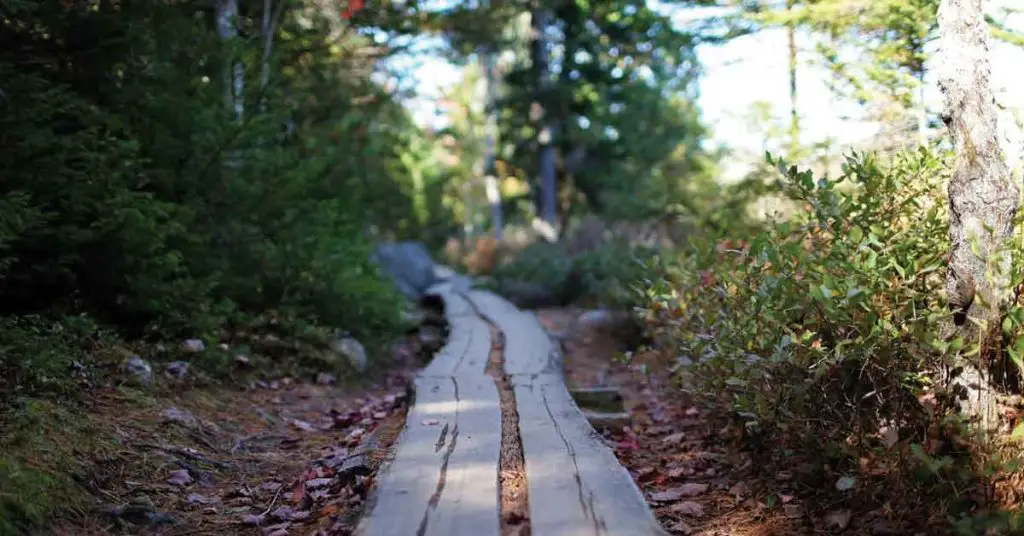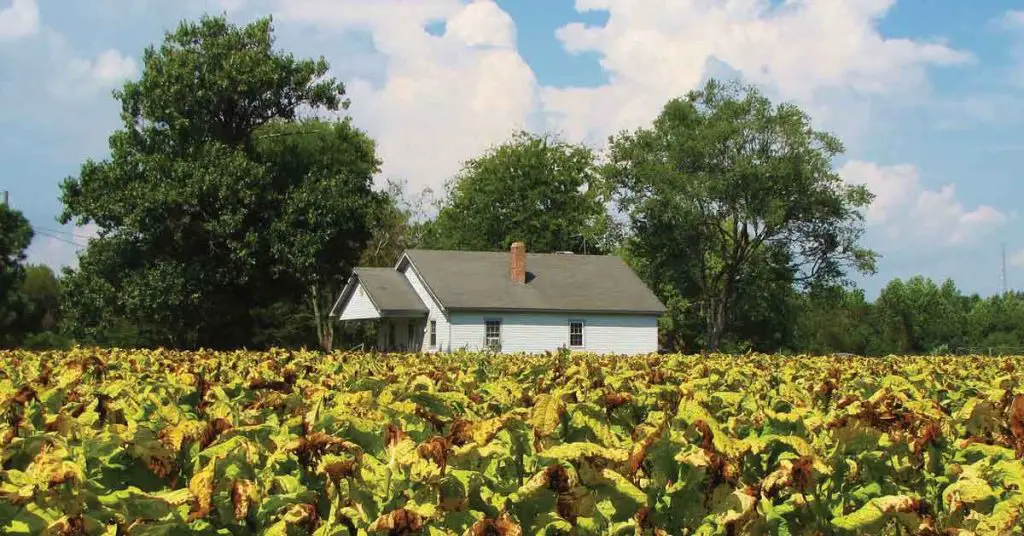Introduction: Why So Many Folks Are Looking Toward Kansas
A few years back, I was standing on a dry patch of prairie near Salina, staring at a broken fence post and second-guessing everything. The land was cheap. It was also scrappy, sunbaked, and full of rattlesnakes. But I couldn’t stop thinking: What if this could actually work?
If you’ve ever thought about raising your own food, cutting ties with city bills, or giving your kids more room to run, Kansas probably crossed your mind. You’re not alone. A lot of folks are asking if homesteading here is still doable.
This guide walks through the real stuff I’ve learned by living it. You’ll find:
- How Kansas homestead laws really work
- Where people are finding affordable land (and what to watch out for)
- What it’s like to deal with water, wind, and rising feed costs
- The parts no one talks about, good and bad
I’ll share a few hard lessons, some small wins, and why this place still feels like home. If you’re Kansas-curious or knee-deep already, I think you’ll find something here worth chewing on.
Go ahead and grab a seat. I’ll tell you what it’s really like.
FAQs: Homesteading in Kansas

Just here for quick answers? Below are the most common questions folks ask about homesteading in Kansas, in case you’re short on time or not ready for the full guide.
Q1. Can you legally live off grid in Kansas?
Yes, you can live off grid in most rural parts of Kansas. Just make sure your land is zoned for residential use and that your water and septic systems follow county rules.
Q2. What animals can I raise on a small Kansas homestead?
Most Kansas counties allow chickens, rabbits, goats, and bees on less than 5 acres. Always check local zoning before bringing animals home, especially near towns or suburbs.
Q3. Are there towns in Kansas that give away free land?
Yes, towns like Marquette, Lincoln, and Mankato have offered free or low-cost lots if you agree to build and live there. Each town has its own requirements, so call city hall before applying.
Q4. What crops grow best in Kansas for beginners?
Tomatoes, okra, sweet corn, potatoes, and green beans grow well in Kansas soil and heat. Raised beds with mulch help when dealing with clay or sandy soil.
Q5. How much land do you need to start homesteading in Kansas?
You can start with one acre if you plan to garden and keep chickens. If you want to raise livestock or grow crops for sale, look for 3 to 10 acres with decent water access.
Is Kansas a Good State to Homestead?
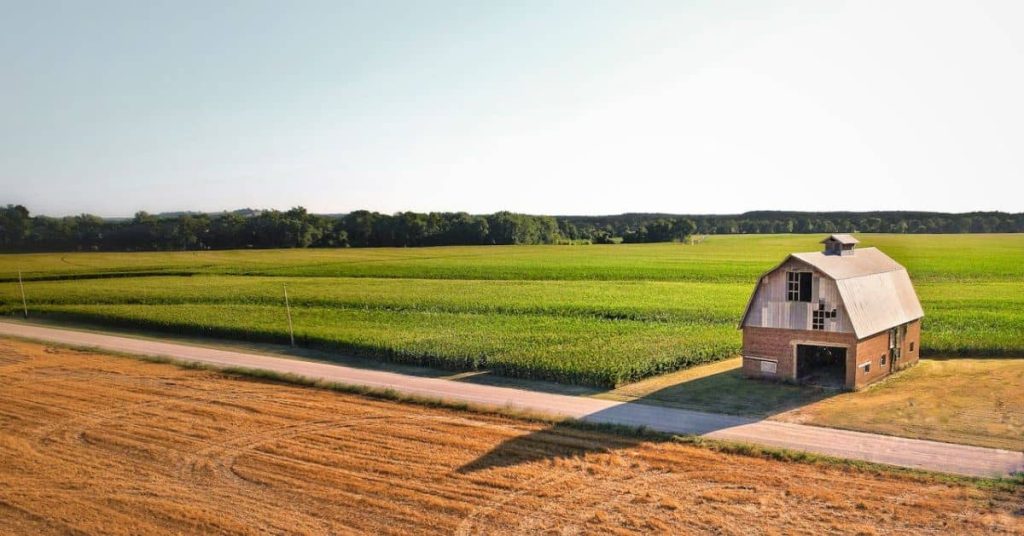
That depends on what you’re looking for and what you’re willing to put up with.
Kansas offers a lot to new and experienced homesteaders: affordable land, fewer zoning restrictions in rural counties, and strong agricultural roots that still run deep. You can walk into most small-town feed stores and strike up a conversation with someone who knows how to fix your chicken coop or which cover crop works best for your soil.
But it’s not all sunshine and self-sufficiency. Kansas weather can turn mean fast. Droughts stretch longer than expected. Wind tears up anything that’s not strapped down. Spring storms will test your roofing skills every year. You’ve got to be ready for that, both mentally and financially.
Folks ask, “Is Kansas really a good place to homestead, or just a cheap place to try?” That’s a fair question. For some, it’s a stepping stone. For others, it becomes the place they raise their kids, grow their food, and never leave.
When I first moved out here, I didn’t know if I’d last a season. But after a few years, a couple frozen pipes, and a lot of shared meals with neighbors, I stopped seeing it as temporary. It became home.
Next, we’ll look at the climate, land prices, and why the folks around you might matter more than the soil you plant in.
Climate, Land Prices, and Community Vibes
Kansas draws a lot of attention for one big reason: land here can be dirt cheap compared to other states. You can still find 5 to 10 acres outside towns like Clay Center or Medicine Lodge for under $30,000 if you’re patient and willing to do a little cleanup. That was the hook for me.
But the deal isn’t just about price. You’ve also got to consider what the weather will do to your plans. Kansas has all four seasons, and sometimes all in the same week. Spring can be muddy, summer gets blazing hot, and winters come with wind that finds every crack in your walls. Tornadoes? Yep, those too.
Still, there’s something about a Kansas sky in late October, when the cornfields glow and everything smells like woodsmoke. That’s the moment folks fall in love with the place.
You might be asking: Can I grow a full garden with this weather? Can I build on raw land without breaking the bank? Short answers? Yes and probably. But it depends on your land and how much sweat you’re willing to put in.
What worked for me:
- Starting small with raised beds and a windbreak of cedar saplings.
- Buying a property with an existing well and septic saved us a ton of money.
- Visiting in both summer and winter before committing.
Locals are usually helpful once they know you’re serious. I’ve had neighbors drop off seed starts, offer to lend a tiller, and warn me when the coop is about to hike feed prices again.
Pros and Cons of Settling Here
Homesteading in Kansas works best when you understand what you’re signing up for. Here’s how it tends to break down:
Pros:
- Affordable land in rural counties, especially compared to Colorado or Missouri.
- Less red tape in many areas, fewer zoning hassles if you’re outside city limits.
- A strong ag culture, which means good access to feed stores, extension offices, and community events like seed swaps and auctions.
Cons:
- Unpredictable weather: I’ve lost whole beds of tomatoes to hail in June.
- Water access can be tricky: Not all land has a good well, and drilling new ones is pricey.
- Isolation: The nearest hardware store might be 45 minutes away, depending on where you settle.
One family I met near Council Grove runs goats and keeps bees. “We didn’t know anyone when we moved here,” they told me. “But once we showed up at a community clean-up day, folks started waving at us on the road. Now we trade goat milk for eggs and help each other during ice storms.”
That kind of story comes up a lot. It might take a while, but once you’re in, you’re in.
If you’re wondering whether homesteading in Kansas is worth the effort, just know it’s not about finding the perfect setup. It’s about finding a place you’re willing to grow into. Mistakes, busted water lines, and all.
Understanding Kansas Homesteading Laws and Land Rules

When folks start looking at land out here, one of the first questions they ask is, “Can I actually build and live on this land the way I want?” Good question. The answer depends on where you’re buying and what you plan to do with it.
Kansas is generally considered friendly to homesteaders, but that doesn’t mean every piece of land is a blank slate. There are still rules, and they vary depending on the county, the zoning, and even how close you are to town.
Let’s look at what counts as a homestead, what you can legally do on your land, and where to double-check the rules before you spend a dime.
What Counts as a Homestead in Kansas
In Kansas, the word “homestead” can mean different things depending on who you’re talking to. For legal and tax purposes, it usually refers to your primary residence, not just land you own. If you qualify, you might get a property tax refund under the Kansas Homestead Refund Act, but you have to meet certain age or income guidelines.
Some folks hear “homesteading in Kansas” and assume they’ll be handed free land like it’s 1862. That’s not how it works anymore. The original Kansas Homestead Act is history, but the dream of carving out a life on open land still draws folks in. What matters now is knowing the rules on the ground.
What worked for me was buying land already zoned for rural residential use. That saved a lot of headaches when it came time to build. I also made sure the property had legal access from the road. That sounds obvious, but you’d be surprised how many listings look great online and turn out to be landlocked.
Ask yourself:
- Is this land zoned for what I want to do?
- Can I live here full-time without jumping through hoops?
- Will I be allowed to raise animals or build what I need?
If you don’t know, call the county clerk’s office. Most of them will talk to you for free and tell you exactly what’s allowed.
Zoning, Building, and Animal Restrictions
Kansas counties are a mixed bag when it comes to zoning. Some are pretty laid-back. Others have rules about how close you can build to a road, how many animals you can keep, or what kind of structures are allowed.
In Barber County, a friend of mine was told he could have chickens, goats, and even a couple of pigs on his five acres, no problem. But in Douglas County, another neighbor had to apply for a special permit just to build a pole barn because of how close he was to a residential zone.
If you’re hoping to go fully off-grid or build with alternative materials (like earthbags or cob), you’ll want to check the building codes. Some counties are open to it. Others might require licensed contractors or inspections at every step.
Things to ask before buying:
- What are the setbacks for building (distance from roads and property lines)?
- Are there any animal limits or restrictions?
- Can you live in a tiny house, camper, or unfinished structure during construction?
I wasn’t sure I could live on-site while building, but since my land was in a less regulated county, the answer was yes. I lived in a fifth-wheel trailer for nearly a year while finishing up the cabin.
Kansas Homesteading Laws and Regulations
There isn’t one single law that covers all of homesteading in Kansas. It’s a patchwork of state statutes, county ordinances, and local guidelines. That can be frustrating, but it also gives you some wiggle room if you know where to look.
Here’s what I suggest:
- Start with the Kansas Department of Agriculture. They provide guidance on land use, water rights, and small-scale farming.
- Check your county’s zoning and planning office website. Many now list zoning maps and permit requirements online.
- Call the county directly if you can’t find clear answers. A five-minute phone call can save you months of regret.
Also, consider reaching out to your local Kansas State University Extension office. They’re an underrated gem for landowners. I once walked into the Reno County office with a question about crop rotation and walked out with soil test kits, plant ID help, and three new neighbors’ phone numbers.
The rules aren’t always simple, but they’re navigable if you take it one step at a time. And if you hit a roadblock, chances are someone nearby has already figured out a way through it.
How to Qualify for a Homestead in Kansas
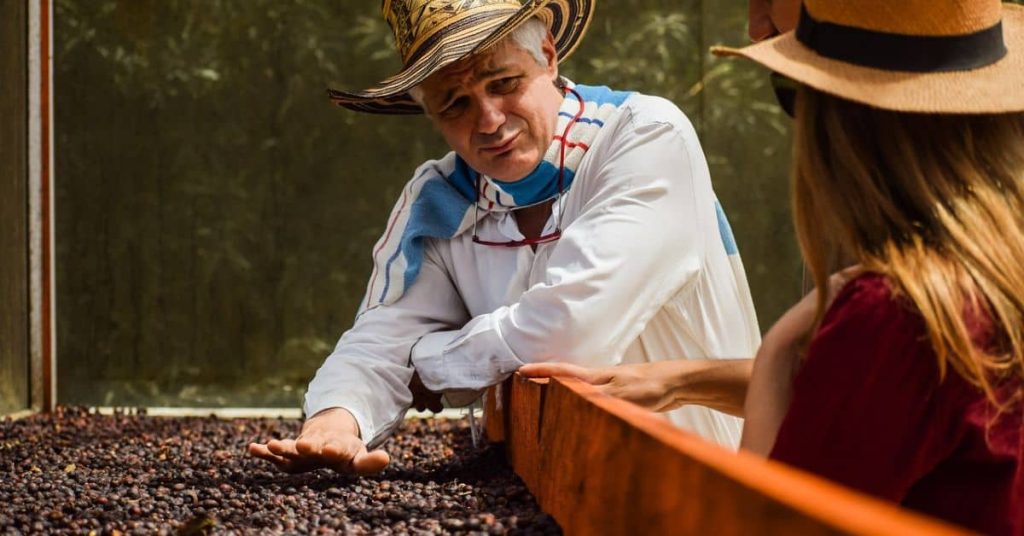
A lot of folks start by asking, “What does it actually mean to ‘qualify’ for a homestead in Kansas?” If you’re picturing someone handing you free land like it’s 1880, I get it. The internet can be pretty misleading.
The short version is this: there isn’t a single homesteading program that gives you land just for asking. But there are legal definitions of a homestead that matter for taxes, and a few towns with special land offers if you’re willing to build and stay put.
Let’s walk through what Kansas law actually says, how it ties back to the original Homestead Act, and what’s changed between 2021 and now.
What the Law Says About Eligibility
In Kansas, your “homestead” typically refers to the house you live in and up to one acre of land that surrounds it. That definition is important for tax and legal protections. You can’t just buy 80 acres, throw a tent on it, and call it your primary residence, at least not if you’re hoping to claim a homestead exemption.
To qualify for the Kansas Homestead Refund (which is a property tax refund), you usually have to meet one of these conditions:
- Be over 55 years old
- Be blind or disabled
- Have a dependent child and meet income limits
There are specific income caps each year, and it only applies to your main home, not rental properties or undeveloped land. You also need to have lived in Kansas for the full year before applying.
What worked for me:
I didn’t qualify for the refund, but I still made sure the land I bought could legally count as a homestead once I moved in. That meant checking zoning and making sure I could actually build and live on it full-time.
Questions to ask yourself:
- Am I planning to live on this land year-round?
- Does the land include or allow a legal residence?
- Do I meet the age, income, or disability criteria for the refund?
Even if you don’t meet those requirements now, it’s good to understand the legal language. It affects everything from taxes to how your property is treated if you ever run into legal trouble.
Tax Breaks and the Kansas Homestead Act (1862)
You’ve probably heard folks online talk about “applying for the Kansas Homestead Act.” Here’s the truth: that law passed way back in 1862 and isn’t something you apply for today. It’s a historical marker, not a current program.
That said, Kansas does offer a few modern tax benefits tied to your home. The biggest one is the Homestead Refund, which I mentioned above. There’s also a Safe Senior property tax freeze program for folks over 65.
For most younger or working-age homesteaders, these programs won’t help right away. But you should still know about them, especially if you’re planning to stay long term.
And if you’re buying in a place like Mankato, Lincoln, or Marquette, then yes, those towns really have offered free or nearly-free lots in the past, but you’ll want to check the town’s requirements. Usually, they ask you to build a house within a year and live in it. Some even require a certain square footage or design approval.
I met a couple who moved to Lincoln in 2020 with three kids. They built a small modular home on one of the town’s giveaway lots and now run a part-time bakery out of their home kitchen. “It was a risk,” they told me, “but the land was free, and the town welcomed us.”
Homesteading in Kansas 2021 vs 2025
Back in 2021, more folks were just starting to consider rural living. Pandemic lockdowns, remote work, and the rising cost of city life pushed people toward the idea of homesteading in Kansas.
Since then, the interest has stuck. But the landscape has changed. Land prices have edged up in some counties, water rights have become more tightly watched in dry zones, and materials for building cost more than they did a few years ago.
What I’ve noticed personally:
- It’s harder to find raw land under $2,000 an acre unless it’s very remote or needs a lot of cleanup.
- Some counties are now more strict about off-grid builds or tiny homes.
- On the flip side, more communities are offering support programs or incentives to attract rural residents.
If you saw a video in 2021 that made it sound easy, just know it takes more planning now. But homesteading in Kansas is still doable for regular folks. The key is doing your homework, asking locals for real answers, and staying flexible when your plans hit a snag.
What Kansas’ Ongoing Drought Means for Homesteaders

Water has always been a big deal in Kansas, but lately, it’s become the deal-breaker for a lot of folks thinking about moving out this way. If you’re considering homesteading in Kansas, you’ll want to think about water early and often. Especially now.
The drought isn’t just a news headline anymore. In counties like Meade and Pratt, it’s been years since folks saw a truly wet spring. Some towns have put usage limits in place. Wells that used to run strong are now trickling, and the cost to drill a new one keeps rising.
When I bought my land, I assumed we’d just dig a well and be done with it. But after three dry summers, I’m glad I added backup plans.
Water Shortages and Well Planning
Before you even sign papers on a property, ask one question: Does this land have a working well?
If the answer is no, the next one is: What are the odds I’ll hit water at a reasonable depth? In some parts of western Kansas, folks are drilling 200 feet or more to get anything usable. And even then, it might be high in minerals or barely enough to run a small household, let alone irrigate a garden or fill troughs.
What worked for me:
- I had the water table tested before buying. It wasn’t cheap, but it gave me peace of mind.
- I talked to neighbors within a mile radius to see how deep their wells were and how steady they’ve been.
- I installed a hand pump on top of our electric wellhead. Just in case the grid goes out again like it did in February 2021.
If you’re planning livestock, double your estimate of how much water you’ll need. Then plan for how you’ll store it during dry months.
How Locals Are Making It Work With Less
You’ll find some real creativity out here. Folks aren’t wasting water on big lawns or decorative fountains. They’re thinking smart.
I know a couple in Barber County who switched their entire garden to deep mulch and ollas, those unglazed clay pots you bury in the ground to water roots directly. “We cut our usage by half,” they told me. “And we actually grew more tomatoes last year than the year before.”
Another friend near Hillsboro uses laundry-to-landscape plumbing to run greywater from their washing machine straight to their fruit trees. “We don’t waste a drop if we can help it,” he said. “Not with the price of drilling another well.”
Here’s what I’ve seen work in our area:
- Deep mulch and drip lines in gardens
- Bucketing shower warm-up water for plant use
- Washing dishes in tubs and pouring the rinse water on perennials
- Switching from water-heavy animals like ducks to more drought-hardy ones like goats or quail
Rainwater, Graywater, and Local Restrictions
Rainwater catchment is legal in Kansas, but it’s not a free-for-all. You’ll want to check your county’s stance on storage tanks, runoff handling, and whether you need permits for bigger systems.
In most counties, small catchment systems (like barrels under gutters) are just fine. If you want to add 1,000-gallon tanks or run roof water into an underground cistern, call the local code office first.
Graywater use (like sending bathwater or laundry water to plants) isn’t fully regulated in some places, which means it’s a gray area (pun intended). But that also means it’s your responsibility to do it safely and keep it from becoming a health issue.
I wasn’t sure how our rural health office would react to my setup, but I called and asked. They said as long as we’re not piping kitchen sink grease into the tomatoes, we’re fine.
If water is tight where you’re looking, don’t panic. Just plan smarter. Ask locals how they’re handling things. Most are more than happy to talk you through what’s worked and what hasn’t.
What Town in Kansas Is Giving Away Free Land?

You’ve probably seen headlines about small towns handing out land for free. It sounds too good to be true, and sometimes it is. But a few places in Kansas are still offering land incentives, especially if you’re willing to build and stay for the long haul.
Now, this isn’t the kind of “free” where you show up, shake hands, and walk away with 10 acres. Most of these deals are tied to conditions like building a home within a year or meeting specific design rules. But if you’re serious about homesteading in Kansas, and willing to meet those terms, it can be a great starting point.
Where to Look for Free Land Opportunities
Right now, a handful of Kansas towns still offer land incentive programs. These change often, so always check the town’s official site or call the city clerk before packing up the moving truck.
Here are a few towns that have offered free land or near-free lots in recent years:
- Marquette: This central Kansas town has offered free residential lots just west of downtown. It’s quiet and family-friendly, with a walkable school district. Several new homes have gone up here because of the program.
- Lincoln: Located in north-central Kansas, Lincoln has promoted itself as “the postcard city.” Their free land program covers lots in a small development with city utilities already in place.
- Mankato: In Jewell County, Mankato has made lots available with simple build requirements. It’s another peaceful spot with a focus on rebuilding its community base.
- Osborne: Some folks overlook this one, but Osborne has given away lots for folks planning to build within 12 months. It’s good to call directly and ask if any are left.
What worked for a friend of mine in Marquette:
He reached out in January, submitted a quick application with building plans, and was offered a corner lot by April. He said, “We were looking for a fresh start and didn’t have a lot saved. The free land gave us the breathing room to do it our way.”
The Catch You Should Know Before Applying
So, what’s the catch? Here are a few things to know before jumping in:
- You usually have to build within a certain time frame. Some towns give you 12 months, others up to 24.
- The home often has to meet size or design standards. Tiny homes, trailers, and cabins don’t always qualify.
- Utilities might not be included. Even if the land is “free,” hooking up water, power, and septic can cost thousands.
- You may need to show proof of financing. Just because you’re willing to build doesn’t mean the town can wait while you sort out a loan.
Ask yourself:
- Do I have the funds and time to build soon?
- Can I live in the area long enough to meet the residency requirement?
- Am I comfortable with local rules on building and design?
I wasn’t sure about these deals myself until I talked to a couple in Lincoln who moved from Colorado. They told me, “We were shocked at how helpful the town was. They even sent us local contractor referrals. We just had to follow through.”
Free Land in Kansas Programs
Many of these programs are city-led. That means they’re not run by the state or any big housing agency. Each town sets its own rules.
Best place to start? Visit the city or county website for the town you’re interested in. Or just call. A lot of these towns still rely on word-of-mouth and don’t keep slick websites.
Good places to check:
- Marquette: www.freelandks.com
- Lincoln: www.livelincolnks.com
- Mankato: www.jewellcountykansas.com/Mankato/
- Osborne: Check their city hall number on Google Maps
These links may change over time, so it’s always smart to talk directly with someone at the city office.
Abandoned Buildings for Sale in Kansas City
If you’re more into urban homesteading or rehab work, Kansas City (on both the Kansas and Missouri sides) has programs that focus on abandoned homes and vacant lots.
These aren’t free, but they can be dirt cheap. Some properties list for under $5,000. Just be prepared for code inspections and renovation deadlines. The Land Bank of Kansas City is a solid starting point.
One guy I met picked up a condemned duplex for $3,500 and is turning it into a two-family homestead setup. “It was a wreck when we got it,” he told me. “But we couldn’t afford land and a house, so this was our shot.”
Finding Cheap Land or Fixer-Uppers in Kansas
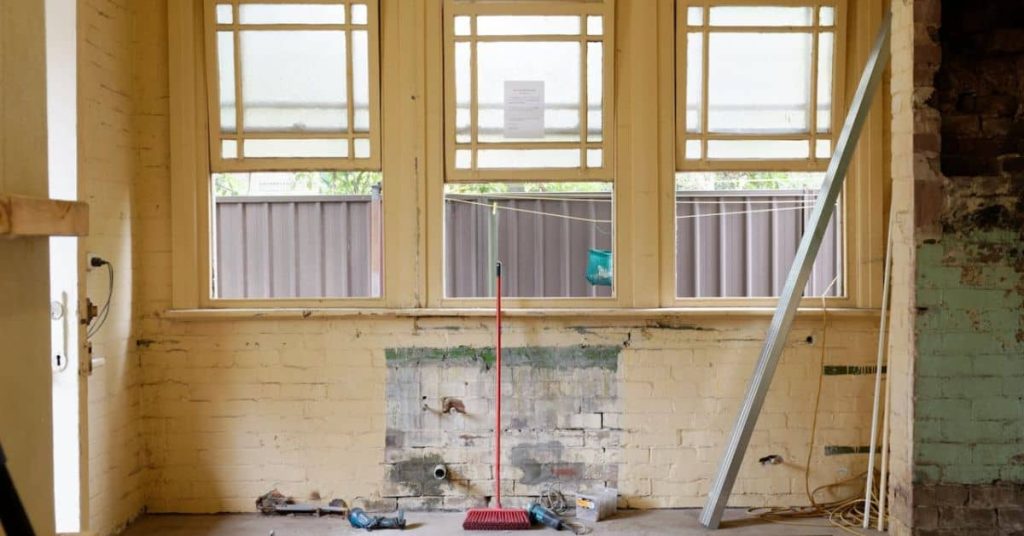
One of the biggest reasons folks look into homesteading in Kansas is the promise of affordable land. And compared to most states, that promise still holds up. But cheap doesn’t always mean easy, and not every deal is worth the drive.
Let’s walk through how to actually find rural land that makes sense, what to expect from fixer-uppers in small towns, and how to spot a property that can really work for homesteading.
Rural Land Options
Kansas has counties where land still sells for under $2,000 an acre. You’ll usually find those prices in the central or western parts of the state. Places like Rooks, Barber, or Smith counties tend to be more affordable than areas closer to Wichita or Kansas City.
But there’s a trade-off. The cheaper the land, the more likely it’s missing one or more of the following:
- A working well
- Power nearby
- Legal access via road
- Good soil for gardening
What worked for me:
I looked at 11 properties before finding the right one. It was 6.3 acres outside of Luray, had a rough well, and came with an old shed full of rusted tools and wasp nests. Not pretty, but the price was fair, and I could legally build on it.
Ask yourself:
- Is this land in a buildable zone?
- How far is it from the nearest town or supply store?
- Does it already have utilities, or will I need to budget for those?
If you’re serious, skip the national real estate sites. Use Kansas Farm Bureau listings, county tax sales, and small-town Facebook groups. I’ve seen great leads from neighbors just putting up a hand-painted “FOR SALE” sign at the end of the driveway.
Buying a Fixer-Upper in Small Towns
Not everyone wants raw land. Some folks want four walls and a roof to work with. That’s where Kansas really shines. Dozens of small towns across the state have old homes for sale under $50,000. Some need a little love. Others need a full gut job.
I met a woman in Smith Center who bought a two-bedroom house for $22,000. “The floors creaked, and the kitchen was a mess,” she told me. “But we fixed it room by room. Now it’s home, and we didn’t need a mortgage.”
Pros of going the fixer-upper route:
- Often comes with existing water, power, and septic
- You can live in it while you fix it
- You’re already inside a supportive community (if you make an effort)
Cons to watch out for:
- Older wiring and plumbing can be expensive to replace
- Some towns have strict codes about what work must be done by licensed contractors
- Heating and insulation are often outdated or missing entirely
Tip: Always call the county inspector or city office before buying. Some homes are condemned or have back taxes. Others may qualify for local rehab grants.
Affordable Homesteading Properties
If you’re hunting for properties that actually work for homesteading in Kansas, keep an eye out for:
- Former farmsteads with barns or sheds still standing
- Homes with large side lots that can be converted into gardens or animal pens
- Parcels that include natural windbreaks like tree lines or hills
Don’t ignore the “ugly” listings. I’ve seen properties with peeling paint and broken windows that ended up being solid after a deep clean and some elbow grease.
One neighbor told me they almost passed on their place in Russell County. “It looked terrible online,” he said. “But the bones were good, and the price was right. We’ve raised three kids and two milk cows there since.”
Affordable doesn’t always mean easy. But with patience, a little research, and a willingness to show up in person, you can still find a homestead that fits your budget and your goals.
Dealing with Higher Feed and Supply Costs in 2025
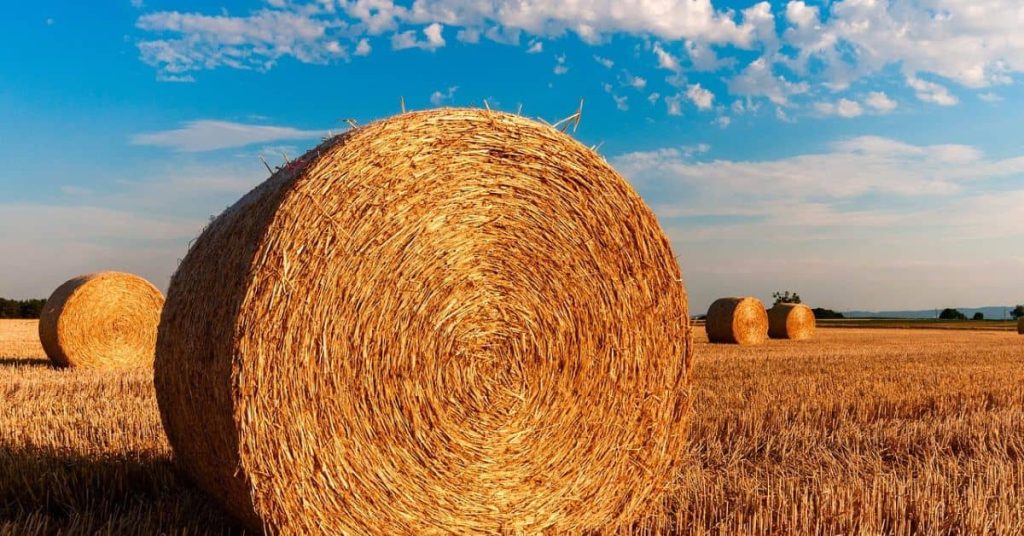
If you’ve noticed your feed bill creeping higher each month, you’re not imagining things. Across Kansas, and really across the country, costs have gone up for just about everything a homesteader needs. Grain, fencing, lumber, even mason jars.
This isn’t meant to scare anyone off. It’s just part of the reality in 2025. Homesteading in Kansas is still one of the most affordable paths to self-reliance, but it takes more planning than it did just a few years ago.
How Prices Have Changed (And What We’re Paying Now)
A bag of layer pellets that cost me $12 in 2021 now runs closer to $20. Goat grain is up nearly 40 percent. Even hay has jumped, especially during the dry months.
Here’s what I’ve paid recently in central Kansas:
- 50 lb. bag of layer feed: $19.85
- Small square bale of prairie hay: $7 to $9
- T-posts (6-foot): $6.75 each (used to be under $4)
- Roll of welded wire fence (100 ft.): over $130 at most farm stores
For folks just starting out, these prices can be a gut punch. I wasn’t sure I could keep my meat birds going this spring, but we made a few cuts and managed.
Where Folks Are Finding Deals and Bartering Locally
The good news? Kansas folks are scrappy, and there’s still plenty of room to work around high prices if you ask around and stay flexible.
What worked for me:
- I started buying feed in bulk through a local co-op. We split pallets with neighbors and save a few bucks per bag.
- I switched from store-bought fencing to used cattle panels from a retired rancher. Cost half as much and works just fine.
- I joined a Facebook group for Kansas homesteaders and found a guy in Ellsworth County trading whole wheat berries for farm-fresh eggs.
Other tips folks around here have shared:
- Hit up estate auctions and small-town feed mills. Sometimes prices are better than the big-name stores.
- Ask older neighbors if they’re downsizing. I got a stack of nesting boxes for free that way.
- Watch for hay listings on Craigslist and keep an eye out for off-field pickup discounts.
Questions to ask yourself:
- Can I raise a different animal this year that’s cheaper to feed?
- Can I plant more forage or rotate animals better to cut back on grain?
- Can I team up with a neighbor to split bulk orders?
Budgeting Tips for New Homesteaders
If you’re new to homesteading in Kansas, you might be shocked by how fast the costs pile up. The key is starting small and keeping your budget honest.
Here are some tips I wish someone had given me early on:
- Plan for seasonal spikes. Hay costs more in late summer. Feed stores run out during storms.
- Set aside a “fix-it” fund. Something always breaks, a gate latch, a water line, a chicken heat lamp.
- Write down every cost for the first year. Even the little stuff. It helps when you plan next season’s garden or decide whether to raise pigs again.
One couple I know outside Kingman keeps an envelope system for all their farm expenses. “We learned the hard way,” they told me. “Now we know what we can afford before we get attached to another batch of rabbits.”
Water Rights and Off-Grid Living in Kansas
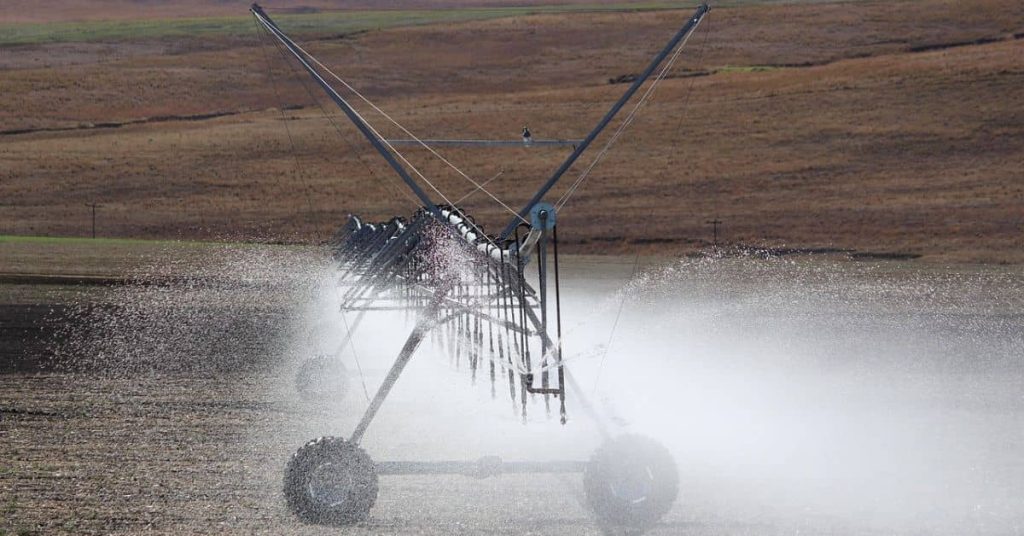
When folks ask me about homesteading in Kansas, water always comes up sooner or later. It’s not just about whether there’s a well on the land. It’s about who owns that water, how much you can legally use, and what happens if things dry up.
Same goes for living off-grid. It sounds peaceful, and it can be, but the truth is, going off-grid in Kansas takes more planning than folks realize. You can’t just flip a switch and walk away from the power company without a solid setup in place.
Let’s walk through the legal stuff, the real-world challenges, and what’s worked for folks trying to live more independently in the Kansas landscape.
Water Access and Legal Hurdles
Not all Kansas land comes with water rights, even if there’s a creek or pond nearby. That surprises a lot of buyers. In Kansas, water use is governed by a mix of surface rights, groundwater permits, and something called “beneficial use.”
Here’s what I’ve learned:
- If you’re using a well for basic home needs (drinking, washing, watering a small garden), you usually don’t need a special permit.
- If you plan to irrigate more than two acres or use large amounts for livestock, you might need to apply through the Kansas Division of Water Resources.
- Rainwater catchment is legal for personal use in most counties, but always double-check local ordinances before setting up big tanks.
What worked for me:
Our land had an old hand-dug well that barely trickled. I had to pay for a deeper well to be drilled, which wasn’t cheap, but we got lucky and hit water at 112 feet. I also installed a backup rain barrel system just in case.
Questions to ask yourself:
- Does this property come with water rights or existing well logs?
- How deep are other wells in the area?
- Is this a zone with drought restrictions or monitoring?
A family in western Kansas told me they had to haul water in from town for two months while their well was being serviced. “We learned quick to use every drop twice,” the dad said. “Once for dishes, then again for the apple trees.”
Water Rights for Kansas Homesteaders
If you’re doing any real growing or raising animals, it’s worth learning how Kansas defines water use:
- Domestic use usually covers homes, gardens under 2 acres, and up to 15 head of livestock.
- Anything beyond that might require a water appropriation permit, which you can apply for through the Kansas Department of Agriculture’s Division of Water Resources.
- If you have surface water (like a creek) running through your land, you may not have legal access to use it unless you’ve got documented rights.
You can search for existing water rights on a property using the Kansas WRIS database or call the local water district. It might sound like a headache, but it’s better than finding out in July that you can’t legally water your fields.
Off-Grid Power and Waste Solutions
Going off-grid in Kansas can be done, but it’s not plug-and-play. You’ll want to think through how you’ll handle:
- Electricity: Solar is popular, but winter cloud cover and storm damage mean you need a backup plan.
- Water: As covered above, well and rainwater systems are your go-tos.
- Sewage and waste: You’ll need a legal septic system or composting toilet. Some counties are stricter than others.
What worked for me:
We started with solar panels and a 24v battery bank. Worked great in summer. Then we hit January with snow and zero sun for a week. I wasn’t sure we’d make it. Ended up adding a propane generator for backup.
We also installed a composting toilet and small graywater system for the sink and shower. Called the county first to make sure it was okay, and they gave us some guidelines to follow.
Off-Grid Living in Kansas
If you’re thinking about going off-grid full-time, ask yourself:
- Can I get a solar or hybrid setup that works in both summer and winter?
- Will the county allow compost toilets or graywater discharge?
- Do I have a plan for cooking, heating, and lighting if the sun doesn’t show for a few days?
I know a couple in Marion County who built their own straw bale house and live almost fully off-grid. “We heat with wood, cook on propane, and our solar keeps the lights on,” they told me. “But it took us five years to get everything working right.”
That’s the part a lot of folks skip over. Homesteading in Kansas off-grid style isn’t impossible. It’s just a long game, with a few bumps along the way.
What Grows Well on a Kansas Homestead?
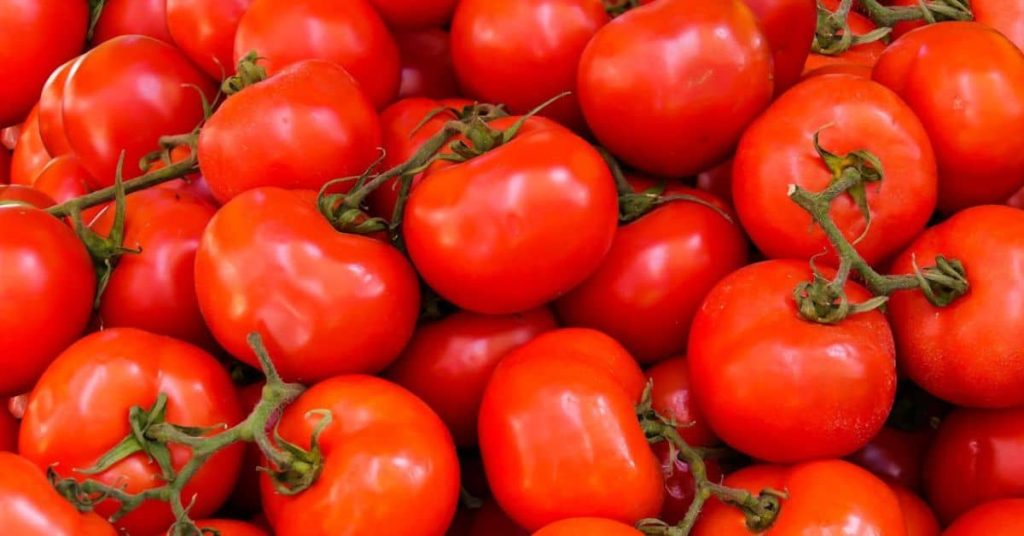
One of the most common questions I get from new folks homesteading in Kansas is, “What can I actually grow here that won’t just shrivel up or get eaten by bugs?” I used to wonder the same thing.
Kansas offers a surprising amount of growing potential, but it all depends on your microclimate, soil type, and how much wind your place catches. Some years, things flourish. Other years, the grasshoppers show up early, and you’re just trying to save what’s left of the tomatoes.
Let’s look at what crops tend to do well, which ones need extra care, and what we’ve learned after a few growing seasons of trial, error, and a whole lot of compost.
Best Crops for Kansas Homesteads
Kansas falls into USDA hardiness zones 5 through 7, depending on where you’re living. That gives you a decent range of warm and cool-season crops to play with. Here’s what I’ve had the best luck with and what my neighbors swear by too.
Cool-season crops (early spring and fall):
- Kale, collards, and spinach
- Lettuce and arugula
- Radishes and turnips
- Sugar snap peas
Warm-season crops (after frost danger passes):
- Tomatoes (stick to determinate types if you’ve got short summers)
- Green beans
- Sweet corn (Silver Queen and Peaches & Cream varieties)
- Zucchini and yellow squash
- Okra (almost bulletproof in our summer heat)
Root crops and storage veggies:
- Potatoes (red and Yukon Gold do well)
- Carrots (if your soil isn’t too clay-heavy)
- Sweet potatoes (need warmth but worth it)
What worked for me:
- I planted tomatoes near the south wall of our shed for extra warmth and wind protection. They outperformed every other row.
- Okra loved our dry, sunny spot and produced even when the cucumbers gave up.
- I tried broccoli three years in a row. Between early heat and cabbage moths, I finally gave up.
Questions to ask yourself:
- Do I get more sun or shade across the day?
- Am I working with sandy soil, clay, or something in between?
- Is my garden spot protected from wind?
Lessons From Our First Few Growing Seasons
Nobody gets it perfect the first time. I sure didn’t. I overwatered my squash, under-mulched my onions, and learned that planting too early in Kansas means watching everything freeze overnight just when you thought it was safe.
Here are a few things I’ve picked up since:
- Mulch is your friend: Keeps the soil cool, cuts down on watering, and protects from wind and weeds.
- Start seeds indoors if you want a head start: Our spring weather is tricky, and transplanting helps.
- Use shade cloth during heat waves: It saved my peppers during a week of 105-degree days last July.
- Plan for pests: Diatomaceous earth, row covers, and neem oil have all earned their keep here.
A neighbor near Hutchinson told me they built raised beds because their soil was basically brick. “It was like trying to dig through pottery,” she said. “But with some compost and cover crops, we finally got it going.”
If you’re new to homesteading in Kansas, expect a few flops. Every garden has them. But with a little patience and a lot of mulch, you’ll start to figure out what your patch of dirt wants to grow.
What the New Kansas Livestock Laws Mean for Small Homesteads

If you’re raising animals on a small plot in Kansas, 2025 brought some new hoops to jump through. Nothing too scary, but enough that it’s worth double-checking the latest local rules before you add goats, build a chicken tractor, or order ducks online.
I’ll be honest, when I first heard the state was updating livestock regulations, I got nervous. Our setup isn’t huge, and we’re not a commercial farm. We’re just trying to raise our own eggs, milk, and meat. Turns out, the changes are more about where and how you keep animals than banning them altogether.
Let’s walk through what’s different, what still works for smaller homesteads, and how to stay on the right side of the law without giving up the dream.
What’s Changed in 2025 for Backyard Farmers
The state didn’t rewrite everything, but a few key updates now affect small homesteaders:
- Animal limits on small residential parcels got stricter in some suburban counties.
- Manure management plans are now required for properties with more than 10 animals of any kind (chickens included) in areas zoned residential or rural-residential.
- Noise and smell ordinances are being enforced more strictly, especially in edge-of-town neighborhoods.
These rules mostly target folks close to towns or inside city limits. If you’re way out in the country, you probably won’t notice a thing. But if you’re running a micro-flock in Salina or keeping goats near the outskirts of Manhattan, it’s worth checking with your local code office.
What worked for me:
I called our county’s zoning board and asked for the most recent livestock guidelines. They emailed them over and even walked me through what I could keep on 3 acres. I found out I was already pushing the bird limit. We rehomed a few roosters just to play it safe.
Questions to ask yourself:
- Is my land zoned agricultural, residential, or mixed use?
- How many animals am I allowed per acre in my county?
- Does the new manure rule apply to me?
What You Can Still Raise on Less Than 5 Acres
If you’re homesteading in Kansas on a small parcel, don’t worry. You’ve still got plenty of options.
Here’s what folks are commonly raising on less than 5 acres:
- Chickens: Most counties allow at least 6 to 10 hens without a permit. Roosters may be restricted due to noise.
- Rabbits: Quiet, compact, and usually exempt from animal counts.
- Goats: Some areas allow 1 or 2 pygmy or mini goats with proper fencing.
- Bees: Legal in many towns with registration. Great for gardens and honey.
- Quail or ducks: Often fall under “poultry” and can be raised in smaller coops.
I know a guy in McPherson County who keeps a rotating trio of meat rabbits in hutches on his back porch. “We’re only on 1.5 acres,” he told me. “But we raise enough rabbit to fill the freezer twice a year and still share with friends.”
And don’t overlook how much you can do with good fencing, quiet animals, and neighbors who support what you’re doing.
Navigating Local Ordinances and Animal Limits
The biggest lesson here? Livestock laws vary a lot depending on your zip code. Two miles can make the difference between legal and illegal chickens.
Here’s how to stay ahead of the rules:
- Call your county zoning or environmental health office: They’ll tell you the current limits and whether you need a permit.
- Get to know your neighbors: Happy neighbors rarely call the code office. Unhappy ones might.
- Keep things clean and quiet: Most complaints come from smell or noise, not the animals themselves.
What worked for a friend of mine in Ottawa:
She wanted to add ducks but wasn’t sure if they’d pass local rules. She invited her neighbor over for coffee, explained the plan, and gave them eggs for a month. “Now they check in on my ducks when we’re out of town,” she said.
Rules can feel like a hassle, but most of them come down to common sense. If you stay clean, respectful, and informed, you’ll have fewer surprises.
Where to Find Local Support and Community

You can have the best soil, a solid barn, and a full pantry, but if you don’t have a community around you, homesteading can start to feel real lonely.
That was something I didn’t think about much at first. I figured I’d figure it all out myself. Then came a busted water line, a goat that wouldn’t kid, and a load of garden pests I couldn’t identify. That’s when I started reaching out.
Whether you’re deep in the Flint Hills or tucked near a small town, there are folks out there doing what you’re doing. And they’re usually happy to help. You just have to know where to look.
Online Homesteading Groups
When you can’t run down the road to ask your neighbor, online groups can be the next best thing. Kansas has a solid online homesteading scene with folks who share everything from fencing tips to pressure canner reviews.
Kansas Homestead Network Facebook Group
This Facebook group is one of the most active online spots for homesteading in Kansas. It’s full of people at all levels, from first-year gardeners to folks who’ve been raising cattle for decades. You’ll find:
- Seasonal planting tips
- Local event announcements
- Questions like “Where can I find non-GMO chick feed in western Kansas?”
- Giveaways of extra seedlings or baby chicks
What worked for me:
I posted asking where to find affordable electric fencing in north-central Kansas. Got three responses in under an hour. Ended up buying from a retired farmer 20 minutes away who even helped me load the posts.
Kansas Homesteading Reddit Threads
Reddit’s not just for jokes and news anymore. The Kansas-specific threads are smaller but friendly. You’ll see everything from grain mill recommendations to compost troubleshooting.
Helpful for:
- Anonymous questions you’re too shy to ask elsewhere
- Learning from folks outside your county
- Getting links to resources, laws, and online tutorials
Local Farmers Markets and Resource Hubs
Online is great, but nothing beats face-to-face support. Kansas has a strong culture of small farmers and backyard growers, and most are willing to talk shop if you show up curious and respectful.
Check your local:
- Farmers markets
- County extension events
- Feed store bulletin boards
These places are full of informal mentors. The kind of people who’ll give you a bag of seed potatoes and tell you what not to do with them.
Kansas City Homesteading Authority
For folks closer to the metro area, this nonprofit has been organizing workshops, land access programs, and educational events. Even if you’re outside the city, they’ve got online guides and a newsletter worth signing up for.
Topics they cover:
- Urban livestock laws
- Composting and garden layout
- Buying vacant land for homesteading purposes
Kansas Department of Agriculture
They’re not just for big-time farmers. You can find:
- Info on food safety laws (important if you’re selling eggs or jam)
- Livestock ID and branding guides
- Water rights and small-scale production permits
Tip: Their publications section is full of free PDFs on soil health, pest control, and fencing tips.
Kansas State Extension Programs
Every county has an extension office, and they’re goldmines of info. I once walked in just needing help with soil pH and walked out with planting calendars, a sample kit, and two new gardening friends.
They offer:
- Soil testing
- Master gardener advice
- Pest and disease identification
- Workshops and seasonal events
What worked for a neighbor near Emporia:
He took a free pruning workshop through the extension and said, “It saved my apple trees. I had no clue I was cutting them wrong every winter.”
If you’re out there homesteading in Kansas and feeling stuck or stretched thin, you’re not alone. Whether you’re looking for advice, seeds, fence posts, or just a little moral support, there’s a community ready to meet you where you are.
The Honest Truth: What It’s Really Like to Homestead Here

Some days out here feel like a postcard. Chickens scratching near a blooming lilac bush, bread rising in the kitchen, and the wind blowing just soft enough to keep the bugs away.
But other days? You’re soaked to the knees fixing busted plumbing at 6 a.m. or digging a trench by flashlight because a storm’s coming and your roof drain still isn’t fixed.
Homesteading in Kansas is both. It’s satisfying and frustrating. Peaceful and exhausting. Most of all, it’s humbling. And that’s the part folks don’t always talk about.
The Hard Parts No One Warned Us About
I didn’t expect to feel overwhelmed. I thought growing our own food and raising a few animals would come naturally. Turns out, there’s a lot more trial-and-error than I planned for.
Here’s what’s been tough for me, and for just about every homesteader I’ve met:
- The wind never stops. You think you’ve secured that tarp? Think again. It’ll be in the neighbor’s field by morning.
- The loneliness creeps in. Especially in winter, when roads are slick and daylight disappears before dinner.
- Nothing goes according to schedule. Animals get sick. Seeds don’t sprout. Wells run dry.
- The work is never really done. You fix one fence and notice another is sagging. Always something.
One neighbor told me, “The land always wins. You’re not out here to conquer it. You’re here to learn how to live with it.”
What helped me push through:
- Writing things down when they went right, so I had something to look at when everything felt off
- Calling other local homesteaders instead of trying to figure it all out solo
- Learning to laugh when I messed up (like planting corn two weeks early and watching it freeze)
The Moments That Make It Worth It
But then there’s that first warm day in April when the garlic pushes through the straw. Or the way fresh eggs still feel warm in your hand. Or the neighbor who drops off extra tomato starts because they remembered you mentioned yours didn’t take.
These moments stick.
I remember the first time we pulled carrots from the garden and ate them right there in the dirt, gritty and sweet. Or the night the power went out and we cooked dinner over a fire like it was no big deal.
A family down in Cowley County told me they moved here thinking it’d be a fun experiment. “Now our kids know where their food comes from,” the mom said. “And we know our neighbors in a way we never did back in the city.”
If you’re thinking about homesteading in Kansas, just know it’s not always tidy. But it is real. The kind of real that sticks with you.
You’ll learn things you didn’t expect. About animals. About plants. About yourself. And if you can stick with it through the hard days, the good ones are worth every bit of the effort.
Could Homesteading in Kansas Work for You?
f you’ve read this far, you’re probably weighing the idea seriously. Maybe you’re tired of city prices. Maybe you want your kids to grow up with dirt under their fingernails. Or maybe you’re just curious about whether you could build something real with your own two hands.
Homesteading in Kansas is full of surprises. It’s not always easy, but it is doable. And for the right folks, it’s deeply satisfying. Before you jump in, it helps to get the full picture: what’s hard, what’s rewarding, and where to find help along the way.
Let’s do a quick recap, then I’ll send you off with a simple next step you can take today.
Recap of What We Covered
We’ve covered a lot in this guide, and hopefully it’s given you a clear picture of what homesteading in Kansas really involves.
We looked at:
- What the climate, laws, and local culture mean for new homesteaders
- How land and livestock rules work in 2025
- What it takes to manage water, build off-grid systems, and stretch a dollar
- Which crops grow well and how local communities support one another
We didn’t skip the hard parts. Kansas wind is real. So are supply costs and zoning headaches. But if you’re ready to dig in, literally and figuratively, there’s a lot of reward to be had here.
Take the First Step
If something in this article clicked with you, I hope you don’t let the uncertainty hold you back. Every homesteader starts with questions, mistakes, and doubts. What matters is that you start.
Got a story or question of your own? I’d love to hear it. Drop a comment below and share what’s worked for you or what’s got you stuck. You can also subscribe for updates when new posts go live.
And if you’re ready for more practical guidance, check out:
- Homesteading in Missouri in 2025: A Practical Guide to Self-Sufficiency (While focused on Missouri, this guide offers practical insights into land acquisition, sustainable living, and building a self-sufficient lifestyle that are applicable to Kansas homesteaders as well.)
- Off-Grid Living: 10 Essentials for Going Off Grid (This article delves into the critical components of off-grid living, including energy sources, water collection, waste management, and food production.)
Homesteading in Kansas isn’t for everyone. But if you’ve read this far, there’s a good chance it might be just right for you.
Disclaimer: The information provided in this article is for general informational purposes only and is not intended to be a substitute for professional advice. The author of this article does not claim to be an expert in homesteading and the information provided should not be relied upon to make decisions about your own homesteading journey. Please do your own research and consult with a qualified professional before making any decisions about your homestead.
Share via:
Shaun Alexander is the main writer and editor for HomesteadingSimple.com. With a strong passion for homesteading and sustainability, Shaun has dedicated his life to learning and sharing information about a simple, fulfilling existence tied to the land. His expertise ranges from gardening and livestock management to off-grid living and DIY projects, reflecting the diverse skills necessary for a successful homesteading lifestyle. Shaun’s goal is to inspire and educate others about the possibilities of homesteading, whether in rural, suburban, or urban settings, and to provide practical advice and tips for both beginners and seasoned homesteaders. He believes in a future where more people return to their roots, embracing a life of self-sufficiency and harmony with nature.

